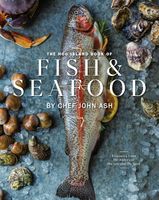Advertisement
About the Recipes in this Book
Appears in
By John Ash
Published 2023
- The organization of the chapters doesn’t follow a strict, scientific taxonomy. Instead, they are organized more according to a cook’s view, with fish and shellfish grouped according to similarities in how they cook and taste.
- Times for recipe steps are often included but not always. I try to emphasize visual cues (color, texture, etc.). As I teach in my classes, visual cues are more reliable, given the vagaries of equipment and tools, and none of us stands there with a stopwatch while we are cooking.
- When salt is called for, it is always kosher salt unless otherwise specified; specifically, Diamond Crystal brand. Flavored salts add an interesting taste dimension and several ideas are included in the Basic Recipes and Techniques section.
- Use freshly ground black pepper unless otherwise specified. Avoid pepper that has been preground.
- When onions are called for, either yellow or white onions can be used unless otherwise specified.
- Try to buy whole spices. Once they are ground, they immediately begin to lose flavor and aroma. Spice grinders are inexpensive. I use an inexpensive electric coffee grinder. If you can, before grinding, toast the whole spices in a dry skillet over moderate heat, stirring regularly for about 3 minutes until they are fragrant.
- Do make notations in the cookbook about anything that you feel is important. Make your notes in the margins. It’s best not to use a pencil …. Your family will thank you.
- Remember that for the most part, recipes are just guides. Each of us has our own likes and dislikes. It’s important to taste regularly as you cook so that you can adjust flavors to your own taste. Per the above, be sure to make a note if you have changed a recipe.

